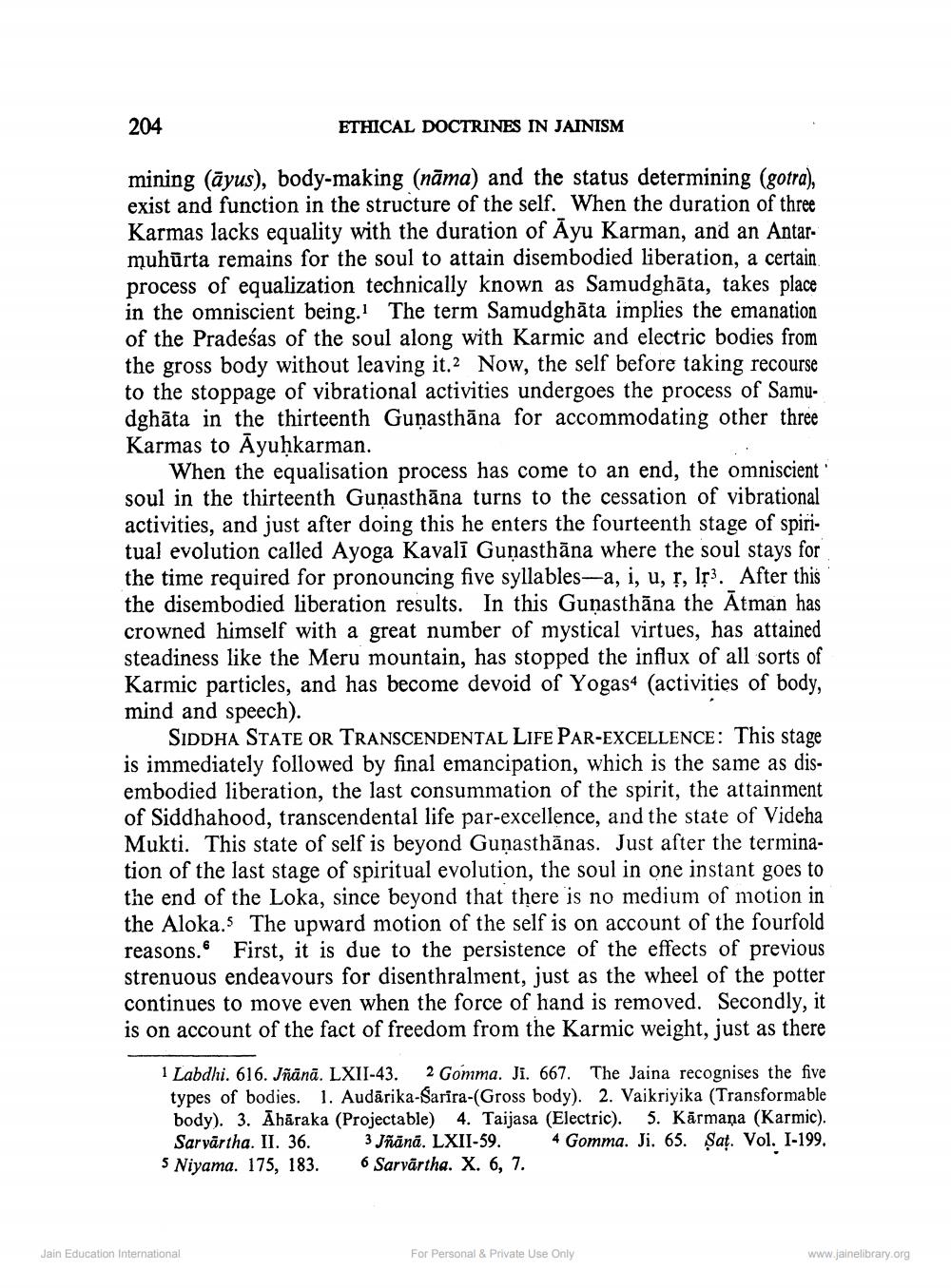________________
204
ETHICAL DOCTRINES IN JAINISM
mining (āyus), body-making (nāma) and the status determining (gotra), exist and function in the structure of the self. When the duration of three Karmas lacks equality with the duration of Ayu Karman, and an Antarmuhūrta remains for the soul to attain disembodied liberation, a certain process of equalization technically known as Samudghāta, takes place in the omniscient being. The term Samudghāta implies the emanation of the Pradeśas of the soul along with Karmic and electric bodies from the gross body without leaving it. Now, the self before taking recourse to the stoppage of vibrational activities undergoes the process of Samudghāta in the thirteenth Gunasthāna for accommodating other three Karmas to Ayuhkarman.
When the equalisation process has come to an end, the omniscient soul in the thirteenth Gunasthāna turns to the cessation of vibrational activities, and just after doing this he enters the fourteenth stage of spiritual evolution called Ayoga Kavalī Gunasthāna where the soul stays for the time required for pronouncing five syllables-a, i, u, ļ, Ir. After this the disembodied liberation results. In this Gunasthāna the Ātman has crowned himself with a great number of mystical virtues, has attained steadiness like the Meru mountain, has stopped the influx of all sorts of Karmic particles, and has become devoid of Yogas4 (activities of body, mind and speech).
SIDDHA STATE OR TRANSCENDENTAL LIFE PAR-EXCELLENCE: This stage is immediately followed by final emancipation, which is the same as disembodied liberation, the last consummation of the spirit, the attainment of Siddhahood, transcendental life par-excellence, and the state of Videha Mukti. This state of self is beyond Gunasthānas. Just after the termination of the last stage of spiritual evolution, the soul in one instant goes to the end of the Loka, since beyond that there is no medium of motion in the Aloka. The upward motion of the self is on account of the fourfold reasons. First, it is due to the persistence of the effects of previous strenuous endeavours for disenthralment, just as the wheel of the potter continues to move even when the force of hand is removed. Secondly, it is on account of the fact of freedom from the Karmic weight, just as there
1 Labdhi. 616. Jñānā. LXII-43. 2 Gomma. Ji. 667. The Jaina recognises the five types of bodies. 1. Audārika-Sarira-(Gross body). 2. Vaikriyika (Transformable body). 3. Ahāraka (Projectable) 4. Taijasa (Electric). 5. Kārmana (Karmic).
Sarvärtha. II. 36. 3 Jñānā. LXII-59. 4 Gomma. Ji. 65. Sat. Vol. I-199. 5 Niyama. 175, 183. 6 Sarvartha. X. 6, 7.
Jain Education International
For Personal & Private Use Only
www.jainelibrary.org




